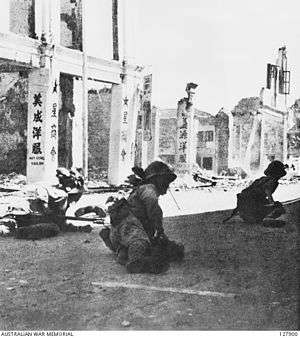
Malayan Campaign
The Malayan Campaign was fought by Allied and Axis forces in Malaya, from 8 December 1941 – 31 January 1942 during the Second World War. It was dominated by land battles between British Commonwealth army units, and the Imperial Japanese Army with minor skirmishes at the beginning of the campaign between British Commonwealth and Royal Thai Armed Forces. For the British, Indian, Australian and Malayan forces defending the colony, the campaign was a total disaster.
The operation is notable for the Japanese use of bicycle infantry, which allowed troops to carry more equipment and swiftly move through thick jungle terrain. Royal Engineers, equipped with demolition charges, destroyed over a hundred bridges during the retreat, yet this did little to delay the Japanese. By the time the Japanese had captured Singapore, they had suffered 9,600 casualties.
Background
Japanese
By 1941 the Japanese had been engaged for four years in trying to subjugate China. They were heavily reliant on imported materials for their military forces, particularly oil from the United States. From 1940 to 1941, the United States, the United Kingdom, and the Netherlands imposed embargoes on supplying oil and war materials to Japan. The object of the embargoes was to assist the Chinese and encourage the Japanese to halt military action in China. The Japanese considered that pulling out of China would result in a loss of face and decided instead to take military action against US, British and Dutch territories in South East Asia. The Japanese forces for the invasion were assembled in 1941 on Hainan Island and in French Indochina. This troop build-up was noticed by the Allies and, when asked, the Japanese advised that it related to its operations in China.
Podcasts:

